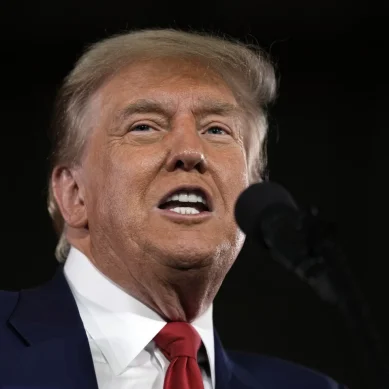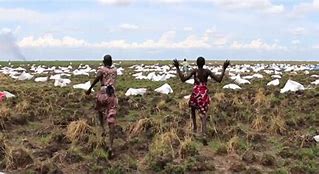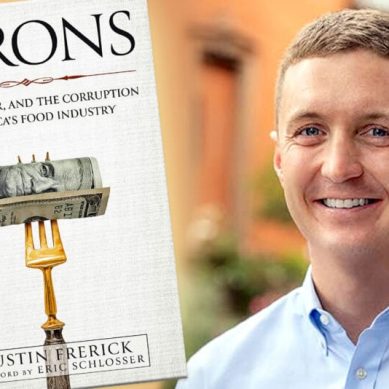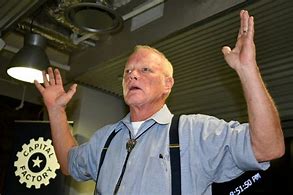
A biodefense official who played a key role in medical and public health preparedness under the Trump administration during the start of the Covid-19 pandemic Dr Robert Kadlec has revealed that one of the first people to issue a patent for a vaccine against Covid-19 was Chinese People’s Liberation Army scientist Zhou Yusen, who is also a vaccinologist.
“When you look at the patent and what he published on that Covid vaccine, you quickly realise that he had to start very early … he had to start working with the Covid virus around November or as early as October,” he said.
“We think the outbreak occurred … [in] late October, November – and he’s doing animal studies with mice, likely at the Wuhan Institute of Virology,” Kadlec said. “He published a paper in collaboration with the WIV in November of 2019. Lo and behold, this outbreak happens in Wuhan.”
Kadlec told investigative journalist Paul Thacker: “You can’t make a cogent, convincing argument that it came naturally from an animal. What they were trying to do is make the argument that it’s zoonotic, and there’s no evidence to support that.
“The evidence I have is from George Gao, the guy who was the director of the Chinese CDC [Centres for Disease Control and Prevention], who published serially that this virus was not from the market.”
When asked why some scientists continue to promote the zoonotic or “wet market” theory, Kadlec called it “a red herring” that “even the Chinese relented from,” and said such messaging “looks like an information operation.”
“Misdirection. It’s like denial and deception,” Kadlec said. “How do we go from a phone call with ‘Well, this just doesn’t look right’ to the opposite, “There’s no possible way it could be a lab’? And I wish I could explain that.”
Kadlec said that he was a recipient of the February 1, 2020, email which included Fauci, Collins, Andersen, Farrar and others but did not recall reading it.
“At the time … figuring out how the pandemic started wasn’t in my wheelhouse,” he said. “I was focused on countermeasures, preserving hospital systems and distributing PPE – what little we had.”
His agency at the time, ASPR, did ask the National Academies “to look at the genetic sequence [of SARS-CoV-2] to truncate some of the wilder speculation out there,” but their response was that they “needed more information.”
Kadlec said that later, when he was leading the Senate HELP (Health, Education, Labor and Pensions) committee investigating Covid-19’s origins, “We could not link what we believe happened in Wuhan directly to NIH funding.”
Thacker told The Defender the HELP report made little mention of the NIH and no mention of Fauci or gain-of-function research but laid a lot of blame on China.
“That report was one big misdirection to point the finger at China, that the only way we can figure out what’s going on is if China has become more transparent. That’s a fool’s game because we know China’s not going to become more transparent,” he said.
Noting that public health agencies such as the NIH and the CDC were not involved in trying to figure out the origins of Covid-19, Kadlec said, “It really has little to do with NIH and CDC. … There was this idea that, between the intelligence community and the scientific community, there had to be someone who would take the responsibility for leading efforts to conduct attribution.”
“If I remember correctly, it ultimately fell to the Department of State. But what science do they know, or the intelligence community?” he said.
He added his view that getting answers from entities like the NIH, Democratic Party politicians, the House or the Senate Intelligence Committee was like “pulling teeth.”
According to Kadlec, such coronavirus research was in progress long before the emergence of Covid-19.
“A paper [letter] came out in 2015 in Nature, and they put out two corrections on it. It’s a Ralph Baric and Shi Zhengli paper … funded by Fauci’s institute at the NIH and the corrigendum adds that there was also funding from USAID [US Agency for International Development], the PREDICT programme.”
The letter, titled “A SARS-like cluster of circulating bat coronaviruses shows potential for human emergence” had an editor’s note added to it in March 2020, stating:
“We are aware that this article is being used as the basis for unverified theories that the novel coronavirus causing Covid-19 was engineered. There is no evidence that this is true; scientists believe that an animal is the most likely source of the coronavirus.”
Thacker wrote that a similar example emerged last month as part of the release of the USRTK documents, which he said show US “virologists and Wuhan researchers attempted to mislead the Defence Department’s DARPA [Defence Advanced Research Projects Agency] programme about dangerous virus research in a 2018 grant called DEFUSE.”
Thacker wrote:
“DARPA rejected the proposal as some of the studies involved dangerous gain-of-function studies. We now know, from drafts of the DEFUSE proposal, that virologists planned to conduct those studies at the Wuhan Institute of Virology, although they have denied this several times after the DEFUSE proposal became public.
“In previous statements, virologists and science writers assured the public that the proposed gain-of-function studies discussed in DEFUSE were to have taken place in the lab of Ralph Baric at the University of North Carolina [UNC] and not in the lab of Shi Zhengli at the Wuhan Institute of Virology.
“As we all know, the pandemic began in Wuhan and increasing amounts of evidence points to something going awry in Shi Zhengli’s lab.”
Thacker also noted that “In early drafts of the DEFUSE proposal, Peter Daszak commented to UNC’s Ralph Baric and Wuhan’s Shi Zhengli that some of the work to engineer chimeric SARS viruses would be done in Wuhan,” but later tried to “downplay” the link to Wuhan and Zhengli.
Subsequently, journalists such as Science Magazine’s Jon Cohen publicly attempted to refute any connection between the DEFUSE research and the Covid-19 lab-leak theory. According to Thacker, Cohen once publicly accused him on Twitter of promoting “disinformation” about his questions about the DEFUSE study and its funders.
In another instance, Thacker said Science Magazine’s editor-in-chief H. Holden Thorpe “misled the entire scientific community” by claiming in an editorial that the DEFUSE experiments “hardly posed a threat” and could not have occurred at Wuhan because it was UNC scientists involved with that work.
“Thorpe came from UNC where he was once chancellor, overseeing the university’s research, including Ralph Baric’s. Thorpe resigned from the chancellorship after the UNC was caught in widespread academic fraud,” Thacker wrote.
“It’s a revelation of another lie, but it’s not a revelation of the fact that they were going to be doing this research in Wuhan because they were already doing chimeric research in Wuhan,” Thacker told The Defender.
Thacker wrote that such examples are “typical of the science writer genre: whenever messaging threatens science, run to those very same scientists to get a canned quote and knock it down.”
“We now know that little of what scientists told us about the DEFUSE grant was true,” he wrote. “Virologists planned to do these dangerous virus studies in Wuhan, and they lied about it to the federal government to get funding. And then they lied to us about their intentions, after the pandemic started in Wuhan.”
“Science writers amplified these lies to you and the rest of the American public,” he added, noting that this helped contribute to censorship of public postings suggesting Covid-19 emerged from a lab leak.
“Facebook limited your ability to talk about a lab accident,” Thacker said. “There were multiple ‘fact-checks’ that said it couldn’t have possibly come from a lab in Wuhan … This has been years and years of deception.”
However, with more information emerging pointing towards a lab leak, writers such as Cohen who previously doubled down against the lab-leak theory are now retreating, according to Thacker.
“Many of them who were involved in the coverup are fleeing Twitter now because they’re being humiliated,” Thacker said, noting that Cohen from Science Magazine had already left Twitter.
“They got it wrong, and they don’t want to admit this because this isn’t the only thing they got wrong. A lot of the things they wrote about – masks, vaccines, lockdowns – were wrong,” he said.
“They can’t stand the fact that they’re no longer in control of the narrative. And they’re seeing the fact that their narratives are blowing up.”
This has key implications in terms of preparations for a future pandemic, Thacker said, adding:
“The best way to figure out how to stop a future fire is to understand how the fire that we’re dealing with started. That’s why you have fire inspectors to go through and inspect and see what started the fire.
“Same thing with pandemic research. From the beginning, there have been constant attempts to denigrate and downplay the possibility of a lab accident.”
- The Defender report / By Michael Nevradakis, senior reporter for The Defender











